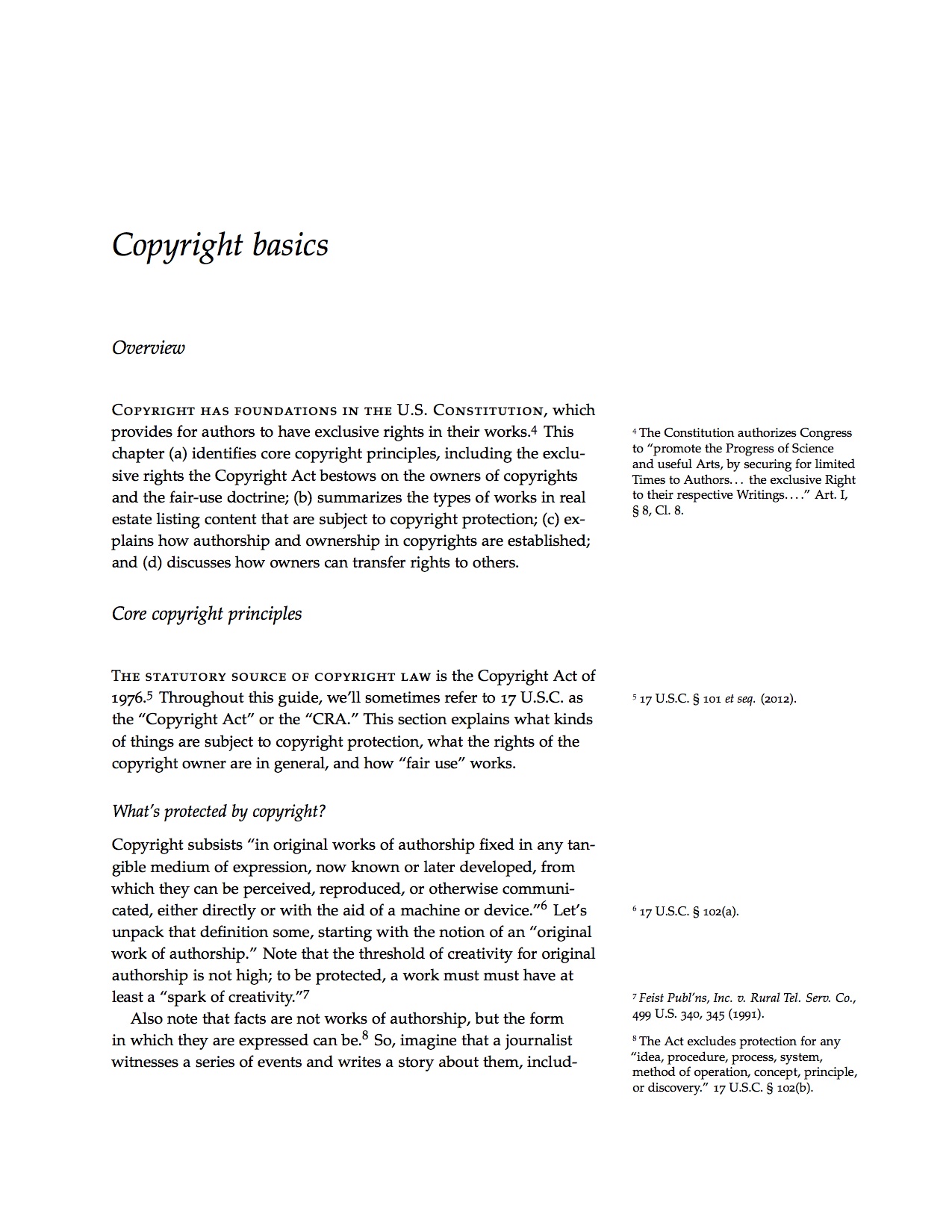There’s a bit of a brouhaha going on among some legal scholars about whether citations in legal briefs should be in-line or in footnotes. Legal writing guru par excellence Bryan Garner argues in a recent ABA column that they should be in footnotes. Rich Phillips, among others, argues against this view. It’s an old debate. Garner’s 1999 book, The Winning Brief, took up the issue; with Brad Clary at Minnesota arguing against it in a 2002 piece in Perspectives: Teaching Legal Research and Writing. The debate isn’t more interesting to me now than then; but I’m disappointed by the lack of other options being discussed.
How about changing the design of the page? I’m inspired by Edward Tufte’s book designs to suggest a side-by-side approach. Here’s an example page:
(Sorry that I’m enough of an idiot that I can’t get this to display as large as I’d like. So click on this link to get the PDF.)
Note a couple important things about this page:
- It’s single-spaced. Double spacing is harder to read.
- The text column and font size are properly proportioned for easy reading.
- View this on an iPad (landscape) and you’ll find the main text and marginal notes quite easy to read.
- For the reader who would skip over footnotes, they are easy to skip over; for the reader who wants the footnotes, they are always at hand in the right margin, immediately adjacent to the point where the footnote reference occurs.
- The marginal notes could easily be set to hot-link to the authorities cited in them, though they are not in this example.
There are three immediate problems with this approach:
- First, you can’t do it (yet) with Microsoft Word, at least not reasonably easily. I created the example here using Latex, an open-source word-processing/typesetting application.
- Second, the marginal notes or ‘footnotes’ can’t be too long, or they make the page ugly and hard to read.
- Third, it looks so different from current practice that lawyers (and judges especially) are highly unlikely to adopt it.
As for the first problem, Microsoft is full of smart folks who could solve that, probably over a weekend. As for the second, I think this is actually a virtue. In an empirical study I’m doing of briefs before Federal district courts, I’m finding “string cites” with four or five cases, each with a lengthy explanatory parenthetical where the author has failed entirely to analogize/disanalogize the cited cases to the case at bar. As Garner notes, legal authors should put their reasoning into the memo and not expect the citation to do it for them. As for the third problem, that’s why I’m not spending a lot of time making this proposal, as I expect it to get nowhere.
-Brian


1 thought on “Solve legal citation problems with a different design”